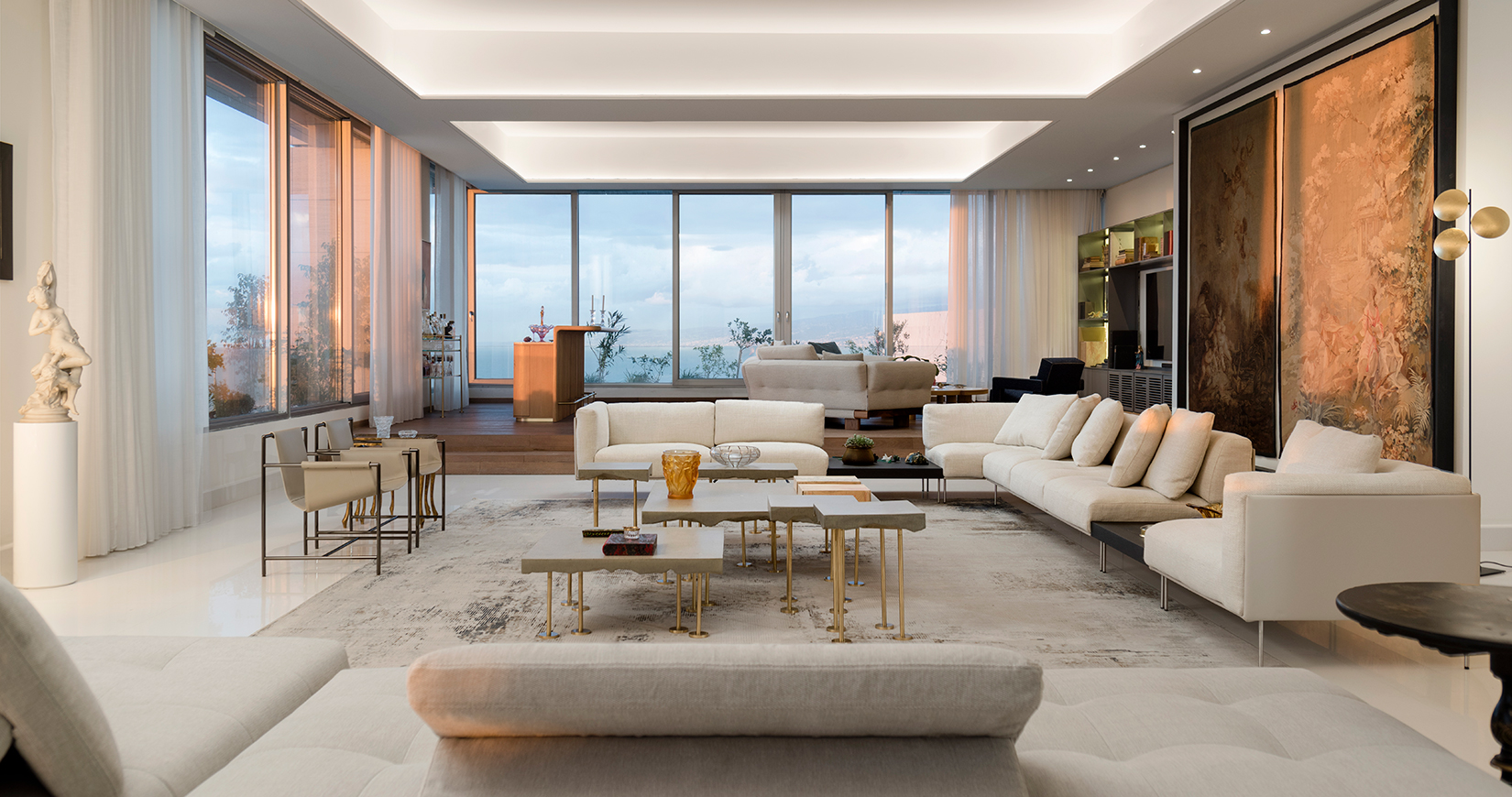Copyright © 2025 Motivate Media Group. All rights reserved.
Karim Nader contrasts contemporary interiors with antique artworks in Beirut home
A harmony of influences collate in this Beirut apartment

The devastating explosion of 4 August 2020, which transformed the skyline of Beirut, has revealed a spirit of determination in many Lebanese people. Some have committed to working on sites affected by the destruction in order to continue looking forward and build the future. Lebanese architect Karim Nader – who leads his eponymous studio – is one of them. He has taken care of redesigning a one-storey apartment, which is nestled on the 14th floor of Les Domes de Sursock contemporary tower in a high-end residential and cultural area close to the Sursock Museum, which is currently under restoration.


The ample views of the Port of Beirut, Achrafieh hill, the city beyond and the northern area toward Mount Sannine were among the starting points for Nader. However, the collection of antiques that the homeowners – a couple in their 50s with a daughter – wanted to highlight in a highly contemporary interior was just as important for the creative concept.

“The clients’ previous apartment in a nearby district was heavily damaged and they were eager to engage in an experimental process of design and object selection that would renew their whole lifestyle,” Nader recounts.

A Chinese buffet, Salvador Dali serigraphs, a Lalique vase and six Utamaro prints – to name only a few of the pieces in the collection – reflect the eclectic taste of the homeowners, which the architect chose to soften by selecting pieces in old golden hues with black, bronze and earthy tones to create visual coherence. “We also curated a very limited number of paintings by Lebanese and European masters, mostly reframed in simple white, black or grey frames,” Nader adds. “As for the contemporary furniture items, they were all selected to be in shades of white, off-white and light greys, in order to sharply complement the vintage items.”


Throughout the seven months it took to finalise the project, the idea of the complementarity and harmony created by merging highly ornate and complex pieces with simple and pure contemporary furniture and spaces guided every decision. The walls and ceilings were kept in pure white while the floor was adorned either in a slightly glossy white tile or in light wood, such as the parquet platform by the port side with the French oak bar by Thomas Trad.

This decor became the perfect backdrop for the Ming’s Heart armchairs by Shi-Chieh Lu for Poltrona Frau, the Rod sofa by Piero Lissoni for Living Divani, the Cab dining chairs by Mario Bellini for Cassina and the Jackie O chandelier by Enzo Catellani for Catellani&Smith, among others. Artworks by Paul Guiragossian, Jean Jansem, Sfeir, Kanaan and Abboud also adorn the different spaces, which comprise a generous reception area with a fireplace, a bar area/library, an ample dining room, kitchen and servicing areas, the parents’ bedroom, a yoga/massage room, the daughter’s bedroom, a guest bedroom and a family TV room. “The idea was to find the right balance between complexity and simplicity, order and disorder, texture and seamlessness, without overdoing any of them,” explains Nader.

The spirit of the place and of the objects gathered by the homeowners – from their families and their travels, and gifts from their friends – clearly inspired the narrative. “The role of the architect is to bring coherence to those fragments by reassembling the puzzle in a renewed and joyful balance,” Nader says. “A temple or a museum, an empty white room or an antique shop; it is at the middle-way between those polar contradictions (isn’t Beirut the mother of all contradictions?) that one finds the empty present moment to enjoy, breathe and be grateful of a new chance for life to express itself.”

The Latest
Turkish furniture house BYKEPI opens its first flagship in Dubai
Located in the Art of Living, the new BYKEPI store adds to the brand's international expansion.
Yla launches Audace – where metal transforms into sculptural elegance
The UAE-based luxury furniture atelier reimagines the role of metal in interior design through its inaugural collection.
Step inside Al Huzaifa Design Studio’s latest project
The studio has announced the completion of a bespoke holiday villa project in Fujairah.
Soulful Sanctuary
We take you inside a British design duo’s Tulum vacation home
A Sculptural Ode to the Sea
Designed by Killa Design, this bold architectural statement captures the spirit of superyachts and sustainability, and the evolution of Dubai’s coastline
Elevate Your Reading Space
Assouline’s new objects and home fragrances collection are an ideal complement to your reading rituals
All Aboard
What it will be like aboard the world’s largest residential yacht, the ULYSSIA?
Inside The Charleston
A tribute to Galle Fort’s complex heritage, The Charleston blends Art Deco elegance with Sri Lankan artistry and Bawa-infused modernism
Design Take: Buddha Bar
We unveil the story behind the iconic design of the much-loved Buddha Bar in Grosvenor House.
A Layered Narrative
An Edwardian home in London becomes a serene gallery of culture, craft and contemporary design
A Brand Symphony
Kader Mithani, CEO of Casamia, and Gian Luca Gessi, CEO of Gessi, reflect on the partnership between the two brands
The Art of Wellness
Kintsugi in Abu Dhabi, situated in a seven-storey villa, offers the ultimate zen retreat
















